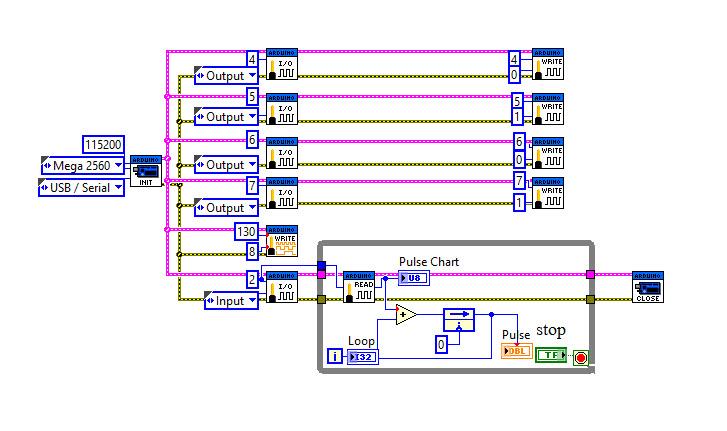

- LABVIEW WITH ARDUINO HOW TO
- LABVIEW WITH ARDUINO INSTALL
- LABVIEW WITH ARDUINO SERIAL
- LABVIEW WITH ARDUINO DRIVERS
- LABVIEW WITH ARDUINO SOFTWARE
However, if the LED does not blink then the module is still searching for the satellites. If the LED blinks after every second, then it indicates that the position fix is found. This LED indicates through its blinking effect whether the module is searching for satellites or has already found them. Moving ahead, the module comes with a position fix LED indicator.

Great use as GPS trackers in smart watches due to very low power consumption (~11mA).This mode causes very less power consumption by turning the module ON/OFF according to the need. Comes equipped with PSM also known as Power Saving Mode.Is able to track 5 locations per second with an accuracy of 2.5m (horizontal).Some key features of NEO-6M chip include: Due to its highly sensitive tracking nature, it makes the NEO-6M module a popular GPS tracker. This is responsible for tracking up to 22 satellites and any location on the Earth on several channels. In the middle of the GPS module, you can find the NEO-6M chip. This connector is found on the GPS module. The antenna is firmly attached to the module via the U.FL connector. To obtain GPS readings, we have to use the NEO-6M GPS module with an antenna. Let us learn a little bit about its hardware. Overall it is a good cost-effective GPS receiver. Measuring 16 x 12.2 x 2.4 mm, its compact architecture along with its low power consumption makes it a good choice for IoT projects. It consists of a high-performance u-blox 6 positioning engine. The NEO-6M GPS module is a GPS receiver that can locate all locations on Earth as it is able to track approximately 22 satellites. This operation is based on a simple mathematical principle called Trilateration. Point to Remember: A GPS receiver locates any three or more of the satellites, calculates the distance to each, and uses this information to generate its own location. Because GPS provides real-time, three-dimensional positioning, navigation, and timing 24 hours a day, 7 days a week, all over the world, it is used in numerous applications, including GIS data collection, surveying, and mapping. Anyone with a GPS receiver can access the system. For support, join the Arduino LabVIEW community at ni.In addition, a GPS receiver can provide data on your speed and direction of travel. C:Program FilesNational InstrumentsLabVIEW 2010vi.libLabVIEW Interface for ArduinoFirmwareLVIFA_BaseLVIFA_Base.pde.
LABVIEW WITH ARDUINO HOW TO
I show how to do this in the video tutorial – above.

LABVIEW WITH ARDUINO SOFTWARE
You must use the Arduino IDE software (which you installed in step 4) to do this. The LIFA comes with a sketch program that must be uploaded to the Arduino before you can use the VIs to communicate with it.

Upload the sketch ‘LIFA_Base.pde' to the Arduino.
LABVIEW WITH ARDUINO INSTALL
Once VIPM is installed, click on this link to get and install the LIFA under LabVIEW 2009+. The LIFA is available as a VI package through the LabVIEW Tools Network.
LABVIEW WITH ARDUINO DRIVERS
Mac does not need drivers but you still need the IDE environment.
LABVIEW WITH ARDUINO SERIAL
To communicate with serial instruments in LabVIEW, you need to have the latest version of the NI-VISA driver. To LabVIEW, the arduino appears as a serial instrument device. If you do not have this version of LabVIEW, you can download a 30day evaluation of it from ni.com/trylabview The VIs that are included in the LIFA are saved in LV 2009, so this is the version of LV that you must have to be able to use the LIFA.


 0 kommentar(er)
0 kommentar(er)
